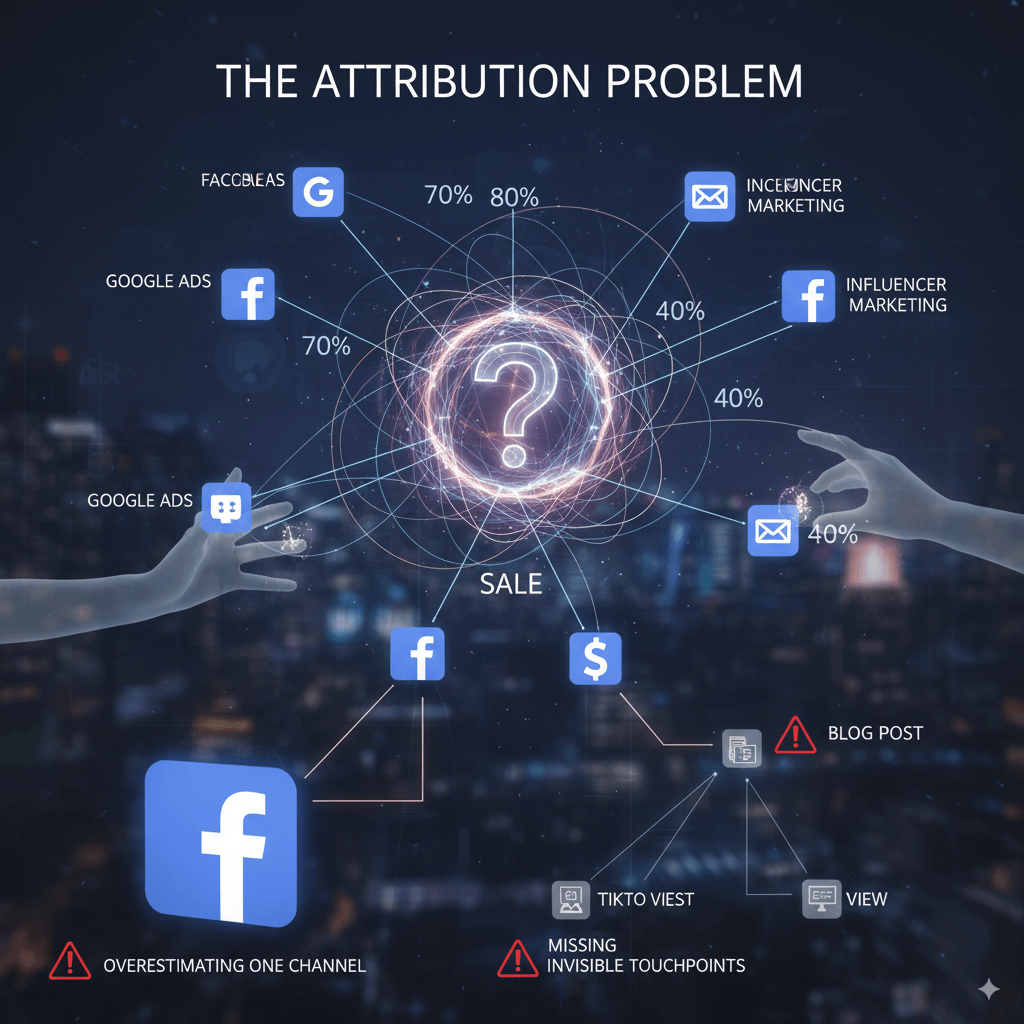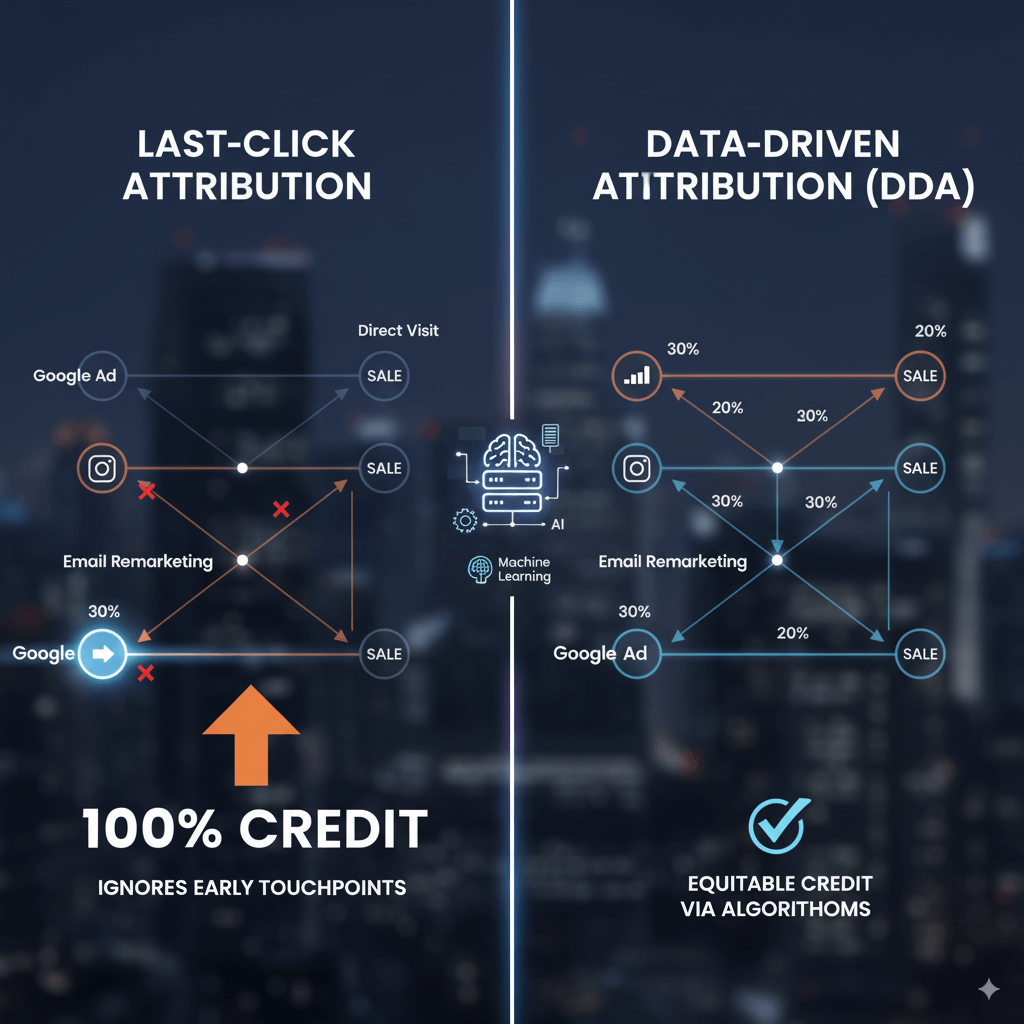Marketing today isn’t about placing ads, emailing people, or posting to social media. It’s about understanding what really moves conversions and dollars. With all the channels at play, Google Ads, Facebook, TikTok, email campaigns, and influencer marketing, the actual challenge is deciphering which one gets the credit for a sale.

This is where attribution models come in. As a consultant, I’ve watched countless companies squander budget simply because they were using old or oversimplified attribution models. Reality? The right model can alter how you perceive performance, how you spend your money, and ultimately, how quickly you grow.
Let’s get down to business in a practical, no-nonsense manner.
Why Attribution Matters
Suppose you invest $10,000 in advertising for a month. Facebook claims it generated 80% of your sales. Google claims 70%. Your email marketing tool also takes credit. If you calculate it all together, you’ve probably made three times the sales that you really made.
This is the attribution problem. Without a system in place, you’re at risk for:
- Overestimating one channel and robbing the others of budget.
- Missing the invisible touchpoints (such as an early blog post or a view on TikTok).
- Making “gut-feel” versus data-driven decisions.
For companies operating in competitive businesses, be it retail, SaaS, finance, or real estate, the accurate attribution model is not a choice. It is the pillar of effective growth.

The Old Debate: Last-Click vs. Data-Driven
Last-Click Attribution
This is the traditional one. The model assigns 100% credit to the last interaction prior to purchase.
Pros: Easy, easy to quantify, broad support.
Cons: Disregards the ugly complexity of today’s customer paths.
Example: Your Google ad clicker checks out your site, exits, views your Instagram ad, returns via remarketing email, and lastly converts with a direct visit. In last-click, just the final “direct visit” receives all the credit, while the preceding efforts are erased from the report.
Good if you need fast, simple answers. Hazardous if you’re deciding on large budgets.
Data-Driven Attribution (DDA)
Algorithms and machine learning are applied in this model to allocate credit for how each channel actually drives the journey to conversion.
Advantages: Truer customer journey, much more accurate.
Disadvantages: Requires sufficient data to be useful, may be difficult to communicate to stakeholders.
Example: That same customer journey now receives more equal distribution. Google Ads may receive 30%, Instagram 20%, email 30%, and direct 20%. Rather than a single winner, each contributor gets its props.
In industries with extended buying cycles (B2B, real estate, high-end retail), DDA provides a much stronger signal.
Beyond the Basics: Models Every Marketer Should Know

- First-Click Attribution
All credit to the first touch. Useful if your attention is on campaign awareness. Example: FMCG brands that spend a lot of money on YouTube advertising tend to monitor first-click in order to gauge whether campaigns open up the funnel successfully. - Linear Attribution
Credit is evenly distributed across every touchpoint. Works best for subscription-based services or SaaS, where developing across many touchpoints matters equally. - Time-Decay Attribution
Touchpoints near conversion are weighted more. Ideal for retail, hospitality, and e-commerce, where urgency and recency influence the final sale. - Position-Based (U-Shaped) Attribution
40% is attributed to the first touch, 40% to the last, and 20% to the middle steps. Ideal for real estate, high-value consulting, or B2B sales where first impressions and last pushes are most critical. - Custom Attribution Models
For companies with unusual cycles, such as car or luxury real estate sales, custom models tend to be the best choice. You make up the rules according to your real customer behavior.
What Model Best Suits Your Industry?
Each industry has its idiosyncrasies. Here’s a consultant’s quick reference guide:
- E-commerce: Time-decay or data-driven. Customers buy quickly, but advertising and remarketing are important.
- SaaS: Data-driven or linear. Long nurturing periods mean each touch point is valuable.
- Real Estate: Position-based. Early trust and the ultimate deal-closer both merit weight.
- Retail & Hospitality: Time-decay. Last-minute leaps of faith frequently prevail.
- Luxury & Automotive: Custom models. These are intricate processes with many layers of influence.
Mistakes I See Businesses Making
- Dependence on last-click because “it’s easy.” That thinking makes early channels go dark.
- Changing models too frequently. Consistency is key; you need a consistent view of data.
- Not feeding sufficient data into DDA. Without volume, machine learning models don’t come alive.
- Forgetting offline conversions. A phone call, a showroom visit, or an event registration can still drive the sale.
- Not aligning attribution with business objectives. If awareness is your objective, why only measure success at the checkout page?
The Future of Attribution
With privacy laws, cookie limits, and AI-based marketing, attribution will continue to transform. Marketers will require hybrid strategies, a blend of first-party data, predictive analytics, and even offline data.
The victors will be those who cease their pursuit of “perfect” attribution and instead leverage savvy, industry-appropriate models to make improved decisions today.

Final Thoughts
Attribution is more than a reporting tool; it’s a decision-making machine. The model you use determines how you view your performance, how you spend your budgets, and how you grow.
If you’re still in the last-click old ways, it’s time to move up. Experiment with advanced models, align them to your industry, and begin creating a strategy based on the actual journey that your customers are making.
In the end of the day, the companies that get attribution will always outmaneuver the ones that don’t.
For more contact Shehnoor Ahmed at hello@shehnoorahmed.com or book 1:1 consultation by clicking below.





